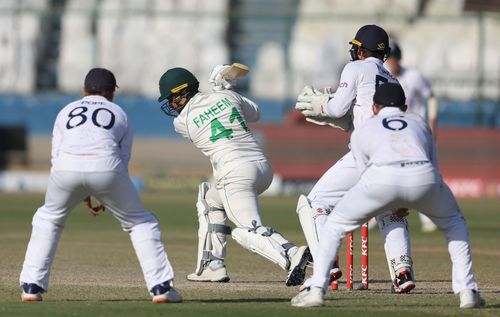
3 major factors behind England's historic 3-0 clean sweep of Pakistan
England trounced Pakistan 3-0 in the three-match Test series that ended in Karachi on Tuesday, December 20. Playing their first Test series in the Asian nation since 2005, Ben Stokes and Co. created history, becoming the first team to inflict a Test whitewash on Pakistan on home soil.
The visitors won the first Test in Rawalpindi by 74 runs and followed it up with a 26-run triumph in Multan. With the series in the bag, their next goal was to complete a 3-0 annihilation of Pakistan. England skipper Stokes asserted in the build-up to the third and final Test of the series in Karachi that they would be going for a 3-0 result.
Stokes and his team walked the talk in the third Test, clinching the contest by eight wickets inside four days. While Pakistan had their moments in the series, the 3-0 scoreline was a fair reflection of the visitors' domination.
As England bask in the glory of their latest achievement in red-ball cricket, we analyze three major factors behind Pakistan’s shocking whitewash.
#1 Contrasting approach of the two teams

Looking beyond the numbers and talent of the two teams, the contrasting approach of England and Pakistan in the Test series was a major differentiating factor. Despite some experts expressing reservations over the effectiveness of the 'Bazball' approach in the sub-continent, England did not deviate from their plans.
England clobbering Pakistan’s bowling and posting 506/4 in 75 overs on the first day of the Test series was an emphatic statement of intent. It pretty much set the tone for the series and England never looked back.
Stokes’ sporting declaration in the second innings was another proof that the Englishmen were here to win, even if it meant risking a loss. The refreshingly positive approach from the visitors continued in the remaining two Tests as well.
In complete contrast, Pakistan always looked on the back foot, despite their near-impeccable Test record at home over the years. Remember, this was England’s first visit to Pakistan for a Test series in more than 15 years. And yet, they were the team that seemed at home.
Pakistan should never have lost the first Test after being set a target of 343. They crumbled to 268 in 96.3 overs on a batting beauty. This was pretty much the story of Pakistan in the series.
#2 Lack of contributions from Pakistan batters

While Asian batters often struggle in overseas conditions, they are almost by default expected to score big in home conditions. However, Pakistan's batting unit's performance in the three-match home series against England was shockingly below par, that too on pitches that had no demons.
If we take a look at the stats of Pakistan’s batters in the series, skipper Babar Azam was the top run-getter for the team with 348 runs in six innings at an average of 58.
Saud Shakeel also did reasonably well, contributing 346 runs at an average of 57.67. However, most of the others struggled. Mohammad Rizwan’s failures stood out. In a forgettable series, he managed only 141 runs at an average of under 24.
Agha Salman scored 184 runs in six innings and Abdullah Shafique 213. The recently retired Azhar Ali also struggled, contributing 112 runs in four innings. The absence of Imam-ul-Haq due to injury also hurt Pakistan’s chances of avoiding a whitewash.
Shifting focus to England’s batters, young Harry Brook gave a brilliant demonstration of how to bat in the given conditions. He was by far the standout batter with 468 runs at an average of 93.60. His three hundreds headlined England’s domination.
Ben Duckett’s aggression at the top of the order - 357 runs at an average of 71.40 and a strike rate of 95.71 - was another major defining factor in the series.
#3 Game-changing contributions from England’s bowlers

The visiting side outplayed Pakistan on the bowling front as well. Every time it seemed that Pakistan were making a comeback, the English bowlers scuttled the challenge.
Chasing 343 in the opening Test, Pakistan were in a decent position at 176/3, but Ollie Robinson (4/50) and James Anderson (4/36) combined to blow away the opposition’s middle and lower order.
In the second Test in Multan, Pakistan’s bowlers did well to hold England to 281 in the first innings. However, Jack Leach claimed four wickets in response as Pakistan were bundled out for 202.
It was Mark Wood’s (4/65) turn to shine in the second innings as the hosts were bowled out for 328 after being set a target of 355. It was a case of so close yet so far for Pakistan, but it was never a case of them being in control of proceedings.
The same pattern was observed in the final Test in Karachi as well. Looking to set England a challenging target, Pakistan batted themselves into a decent position at 164/3, only for 18-year-old leg-spinner Rehan Ahmed to blow them away with figures of 5/48 - making him the youngest male cricketer to claim a five-fer on Test debut.
In a nutshell, England created opportunities out of nowhere, while Pakistan kept floundering the ones that came their way. The end result thus doesn’t come as a surprise.
Also Read: 3 cricket equivalents of football's Lionel Messi-Cristiano Ronaldo debate

